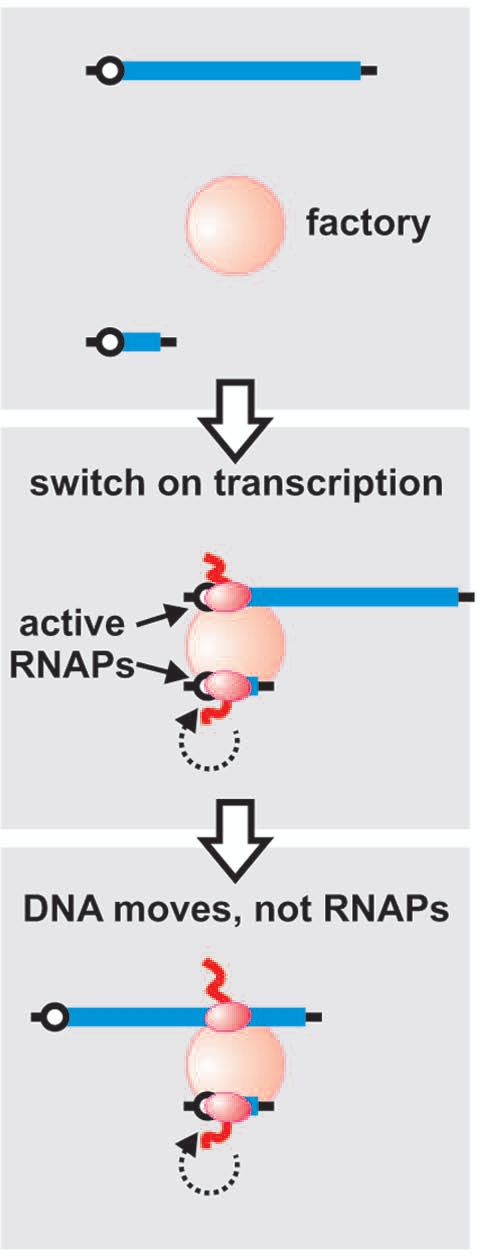Figure 1.

Cartoon depicting the relative movements of two genes after switching on their transcription. On adding TNFα, the two genes (blue) diffuse to a factory (pink) and collide with RNAPs (red) bound there; after initiation, the immobilized RNAPs reel in their templates as they extrude their transcripts (red wavy lines). The short gene is soon transcribed; it detaches and is then transcribed again repeatedly (dotted arrow). It takes much longer to transcribe the long gene. Initially (middle part), its promoter lies next to the short gene (proximity detected by 3C). When the pioneering polymerase has transcribed two-thirds into the long gene (bottom part), the transcribed region now lies next to the short gene. As a result, the short gene lies next to just that segment of the long gene that is being transcribed at that particular moment. This is the result obtained, indicating that the DNA moves (and not the polymerase).
